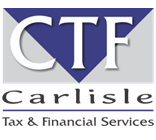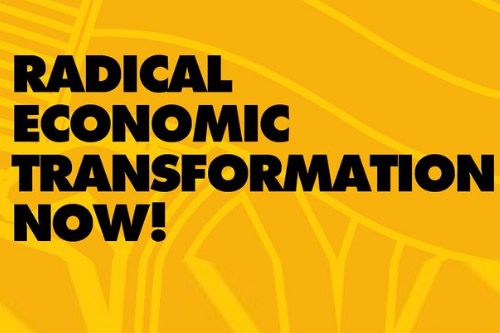The release of the 15th Annual Edition of Tax Statistics on 03 March 2023 (“2022 Tax Statistics”), published by National Treasury and the South African Revenue Service (“SARS”), reverberated a positive shockwave with the post-pandemic recovery in revenue collections being nothing short of impressive.
From a statistics perspective, the economic outlook of revenue collection in South Africa appears promising, however, it begs the question of whether this is due to effective implementation of strategic objectives, such as increasing voluntary compliance, and streamlined compliance processes, or SARS stepping up aggressive collection measures imposed on non-compliant taxpayers, with overt showmanship.
2022 Tax Statistics
The 2022 Tax Statistics report yielded useful information, such as a shrinking tax contribution base, per tax return statistics, of approximately 800 000 taxpayers, since the 2018 tax year, but also an increase in post-pandemic tax revenue of approximately R314.1 billion, or 25.1%, for the period ending 31 March 2022. Further to this, there is also a burgeoning registered taxpayer log, however the majority of taxpayers here, fall below the submission threshold. This increase is noted against the COVID-19 pandemic levels, in which period, SARS showed mercy to taxpayers being unable to fully satisfy their tax liabilities, allowing a number of relief measures, without taxpayers having to jump through too many flaming hoops.
When broken down into its individual statistic components, the findings can be summarised as below:
- Personal Income Tax (“PIT”) contributes approximately 35.5% of tax revenue, with approximately 6 388 532 taxpayers expected to submit returns in the 2021 tax year (year ending February 2021). Assessed taxpayers, per 2022 Tax Statistics, had a cumulative tax liability of R388.1 billion;
- The Value-Added Tax (“VAT”) contribution comes in 2nd, at approximately 25% of tax revenue, from which VAT base, 80% of VAT vendors, in the 2021/2022 tax year, were companies and closed corporations. This 80%, contributed 92.7% of domestic VAT payments, but also accounted for 91/9% of VAT refunds paid out by SARS; and
- Corporate Income Tax (“CIT”) fell into last place, with an attributable contribution to tax revenue of only 20.7% for the 2021/2022 tax period. Noteworthy here, is that from the 1 028 832 companies assessed in August 2022, only 220 170 declared a profit position.
The above makes it evident that a number of both corporate and individual taxpayers, are still in recovery, post-pandemic, with the current economic climate not being the most conducive to an upturn in financial prosperity. Be this as it is, the recovery in tax collections, across all tax types, especially CIT, comes across as all the more impressive, but how is this balanced with the needs of the taxpayer.
Kieswetter – Trapeze Artist, or Magician
One thing that cannot be questioned, is SARS’ rise from the ashes, under the hand of Ringmaster Edward Kieswetter. During his term, Kieswetter has revolutionised collections in South Africa, including technology upgrades and process implementations, making inter-jurisdictional co-operations easy and seamless, including dual-audits.
The revitalised revenue authority has also undergone massive recruiting and training initiatives, but all of this considered cumulatively, does not, in the normal course, merit an increased tax revenue collection, procured from a shrinking tax base, in an unstable economy. This requires either the finest of lines to be walked, putting even the best trapeze artist to shame, or an entire nest of rabbits being pulled out of a hat, daily.
From a perspective of practicality, it appears SARS has mastered sleight of hand, issuing final demands even where there should be none, and striking the fear of life into even compliant taxpayers. Through a number of meetings with SARS, we have gauged that in some instances, the final demand does seem to be a system generated collection measure, which system, cannot wholly be relied on, and in some instances, ma be ignored, but only post-formal confirmation from a SARS Official.
Albeit the utilisation of strategic objectives by the revenue authority, is admirable, some concern does arise from terms such as going after the “lowest hanging fruit” and making non-compliance costly for those with the intention to remain as such. This alludes to a revenue authority with a very targeted collection roadmap, pre-planning and moving in the shadows, until it is time to take the shot, the easiest shot, that is.
Coming Clean
For the compliant taxpayer, SARS has evidenced their ability to provide efficient taxpayer service, however, when it comes to even a trace of non-compliance, the revenue authority has taken a firm, no-nonsense stance, with little to no lenience shown. This is more evident in individual taxpayers, not having the know-how, nor resources, for a drawn-out battle with SARS – the “low hanging fruit”.
Taxpayers wishing to rectify historical non-compliance by means of voluntarily approaching SARS, either to rectify prior under-declarations, inaccurate losses, or settle their outstanding tax debts to the revenue authority, in an attempt to ensure both current and future compliance, do have access to various solutions, from a legal standpoint.
The Compromise of Tax Debt is one such solution, and is aimed at aiding taxpayers, both individual and corporate, to reduce their tax liability by means of a Compromise Agreement, which is entered into with SARS.
The result of entering into the Compromise Agreement, is having your tax liability greatly reduced, to an amount which is affordable to the taxpayer, granting a much-needed reprieve and aiding the taxpayer on the road to recovery.




